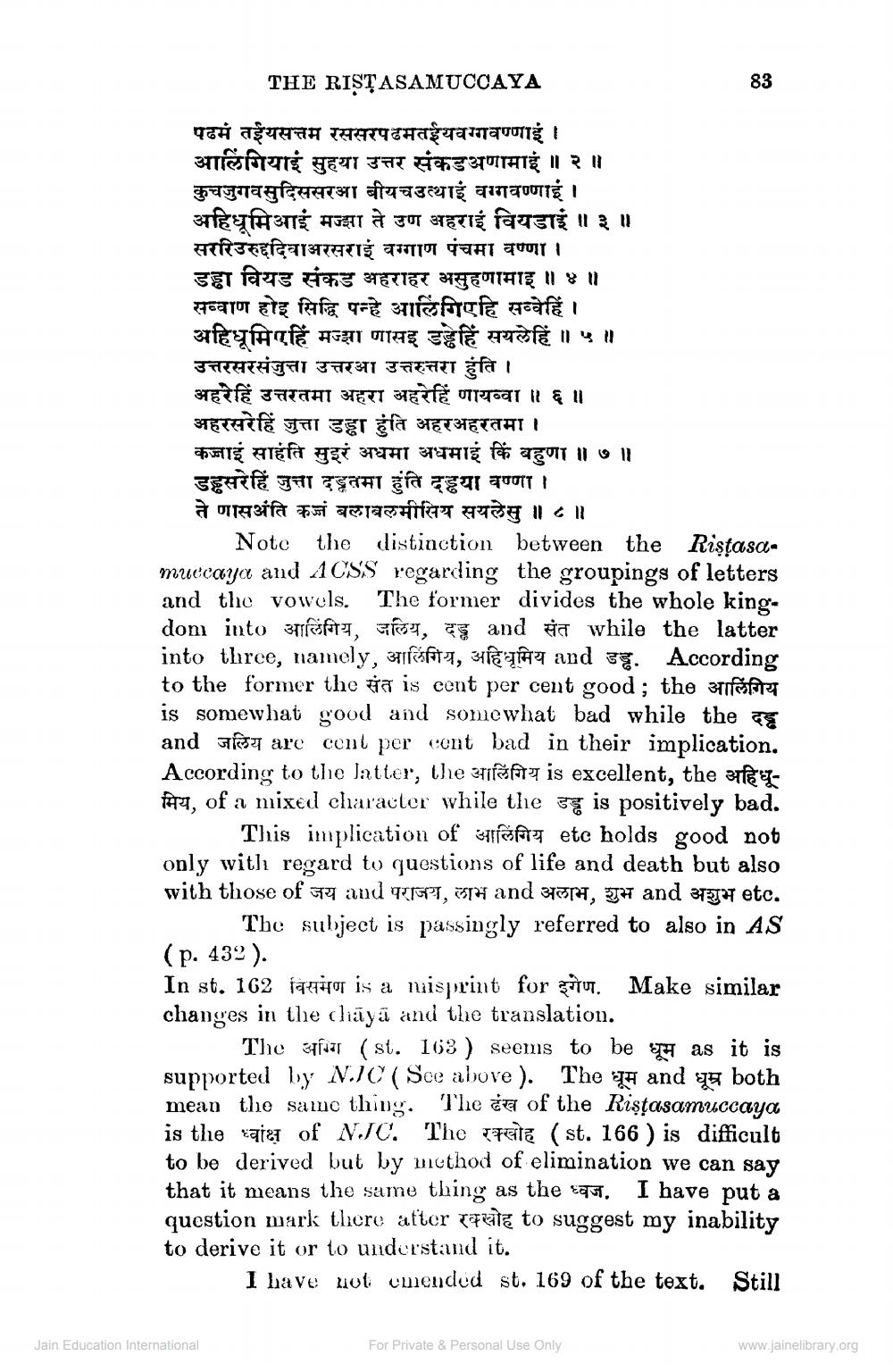________________
THE RISTASAMUCCAYA
पढम तईयसत्तम रससरपढमतईयवग्गवण्णाई।
आलिंगियाइं सुहया उत्तर संकडअणामाई ॥२॥ कुचजुगवसुदिससरआ बीयचउत्थाई वग्गवण्णाई। अहिधूमिआई मज्झा ते उण अहराइं वियडाई ॥३॥ सररिउरुद्ददिवाअरसराइं वग्गाण पंचमा वण्णा । डड्ढा वियड संकड अहराहर असुहणामाइ ॥ ४ ॥ सव्वाण होइ सिद्धि पन्हे आलिंगिएहि सव्वेहिं । अहिधूमिपहिं मज्झा णासइ डड्डेहिं सयलेहिं ॥५॥ उत्तरसरसंजुत्ता उत्तरआ उत्तरुत्तरा हुंति । अहरेहिं उत्तरतमा अहरा अहरेहिं णायव्वा ॥ ६ ॥ अहरसरहिं जुत्ता डड्डा हुंति अहरअहरतमा । कजाइं साहंति सुइरं अधमा अधमाई किं बहुणा ॥ ७ ॥ डड्ढसरेहिं जुत्ता दङ्गतमा हुति दड्ढया वण्णा । ते णासअंति कजं बलाबलमीसिय सयलेसु ॥८॥
Note the distinction between the Ristasaa muccaya and ACSS regarding the groupings of letters and the vowels. The former divides the whole kinge dom into आलिंगिय, जलिय, दड्ड and संत while the latter into three, namely, आलिंगिय, अहिधूमिय and डड्ड. According to the former the संत is eent per cent good ; the आलिंगिय is somewhat good and somewhat bad while the me and sa are cont per cent bad in their implication.
According to the atter, the आलिंगिय is excellent, the अहिधूमिय, of a mixed character while the डड्ड is positively bad.
This implication of bréfiz etc holds good not only with regard to questions of life and death but also with those of जय and पराजय, लाभ and अलाभ, शुभ and अशुभ etc.
The subject is passingly referred to also in AS (p. 432). In st. 162 विसमण is a niisprint for इगेण. Make similar changes in the cliäyū and the translation.
The अग्गि (st. 163) seems to be धूम as it is supported by NIC (Sce above). The धूम and धूम्र both mean the same thing. The te of the Rişțasamuccaya is the ध्वांक्ष of N.JC. The रक्खोह (st. 166 ) is difficult to be derived but by method of elimination we can say that it means the same thing as the east. I have put a question mark there after it to suggest my inability to derive it or to understand it.
I have not emended st. 169 of the text. Still
Jain Education International
For Private & Personal Use Only
www.jainelibrary.org




